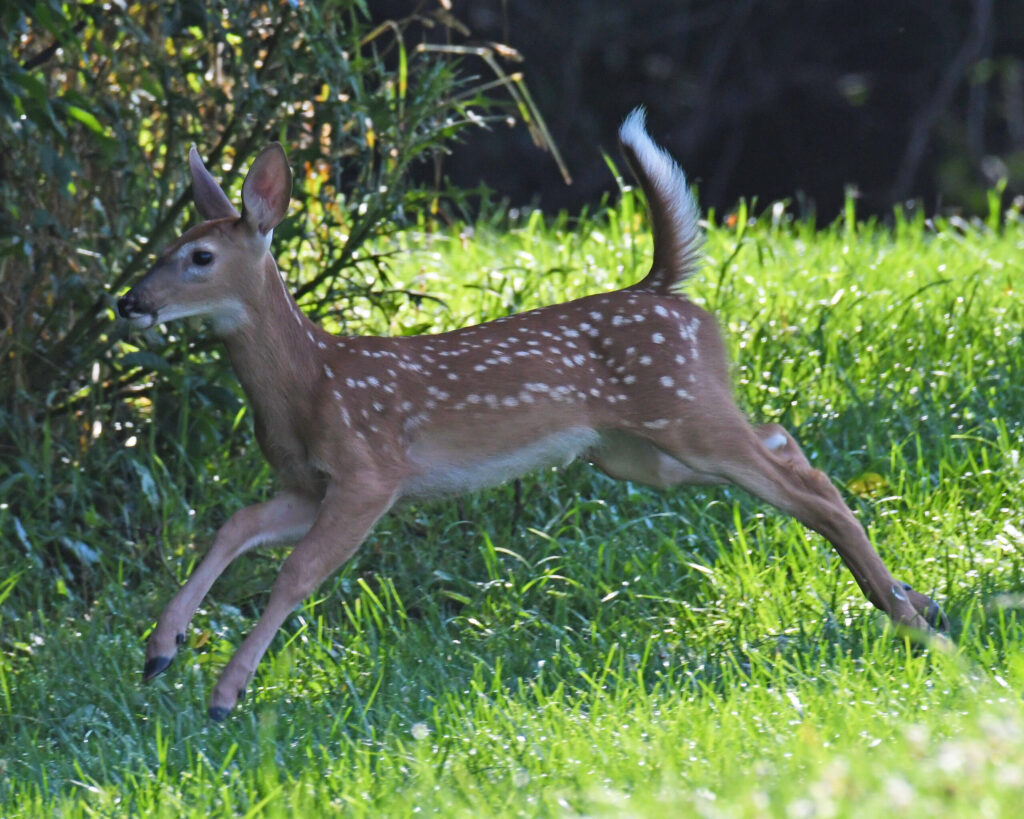Deer Hunting Take at All-time High in Amherst

White-tailed deer. Photo: Wikimedia Commons (CC BY 2.0)
Report on the Meeting of the Conservation Commission, February 26, 2025
This meeting was held over Zoom and was recorded.
The Conservation Commission invited wildlife biologist Martin Feehan of Mass Wildlife to speak about the role of hunting in controlling the white-tail deer population in Massachusetts. He told the commission that harvest based management was the most efficient way of limiting deer population, and that every state relies on hunters. He noted that hunting in Massachusetts has an “incredible” safety record with no non-hunters being killed. In recent years, archery has become more popular among hunters, last year equaling the number of deer are taken with shotguns. Rifle hunting of deer is not allowed in Massachusetts. Last year 17 bucks and 18 does were taken in Amherst. The previous year, 40 deer were killed in Amherst by hunters. Those represent all-time high numbers.
Feehan said that female deer typically produce two fawns per year beginning between ages one and two. On average, only one fawn survives. Coyotes can kill unhealthy fawns, but probably do not affect the overall mortality, since females will often abandon the less healthy of their offspring. Fawns are born in May and June. The range for deer can vary from 0.5 to three square miles, with the smaller range in urban areas. Deer are very successful in suburbia, he said, and there is less die-out with the mild winters recently.
A high abundance of deer negatively impacts forest ecosystems. As numbers of deer rise above 18 deer per square mile of forest, they can decimate the understory and young trees that other wildlife, plants, and insects depend on, increasing invasive plants. One deer can eat over 8 pounds of plants in a single day. In addition, more deer lead to more ticks and more deer-vehicle collisions. Conservation Commission member Andrey Guidera pointed out that 45% of local deer ticks have Lyme disease. The density of deer in Amherst is close to 18 deer per square mile, but is higher in Northampton and very high (30 to 40 deer per square mile) in Eastern Massachusetts. Feehan said that deer are excellent swimmers, so the Connecticut River is no barrier. He said deer have been noted to swim from Martha’s Vineyard to Cape Cod regularly.
Massachusetts monitors the deer harvested by collecting data and regulating the number of females killed per zone. Although the allowable take per hunter has not changed since 1985, the number of hunters has declined. Some site-specific permits are sold to protect water supply areas, such as Massachusetts Audubon’s Arcadia Sanctuary in Easthampton.
In addition to controlling the deer population, hunting may be a significant food source. A 2023 Massachusetts survey of hunters revealed that 11.4% of hunters were food insecure and 18.3% depended on harvested game to supplement their diet. Overall, venison from harvested deer provided more than 4.4 million meals in the state. Hunters also gave 26% of their venison, more than 40,000 pounds, to other families, and processed venison from 312 deer were distributed to 16 nonprofit food suppliers in the state, including the Food Bank of Western Massachusetts and the Northampton Survival Center, through Mass Wildlife’s Share the Harvest program.
In response to questions about the safety of deer hunting by Conservation Commission member Jason Dorney, Feehan said that the range for bow hunting is less than 40 yards and for shotgun is at maximum 50 to 75 yards, so recreational hikers and dog walkers are likely to be seen by hunters. Archers and some shot gun hunters frequently shoot from trees, so are aiming downward. Also, hunters are most successful at dawn and dusk when recreational users of the woods are less likely to be there. There is a 500 foot buffer around recreational facilities where hunting is not allowed. Feehan noted that deer are scarce when people are present in their habitat. He said that bird hunting is more dangerous to non-hunters than deer hunting. Bow hunting season for deer begins in early October until the end of November. Shotgun hunting is allowed in December.

How do we as hunters know if it’s a recreational area or not? Can hunters use recreational area’s to utilize legal hunting grounds? Too many access area’s for hunters are shut off by housing developments, condos, posted signs, and Karen’s.